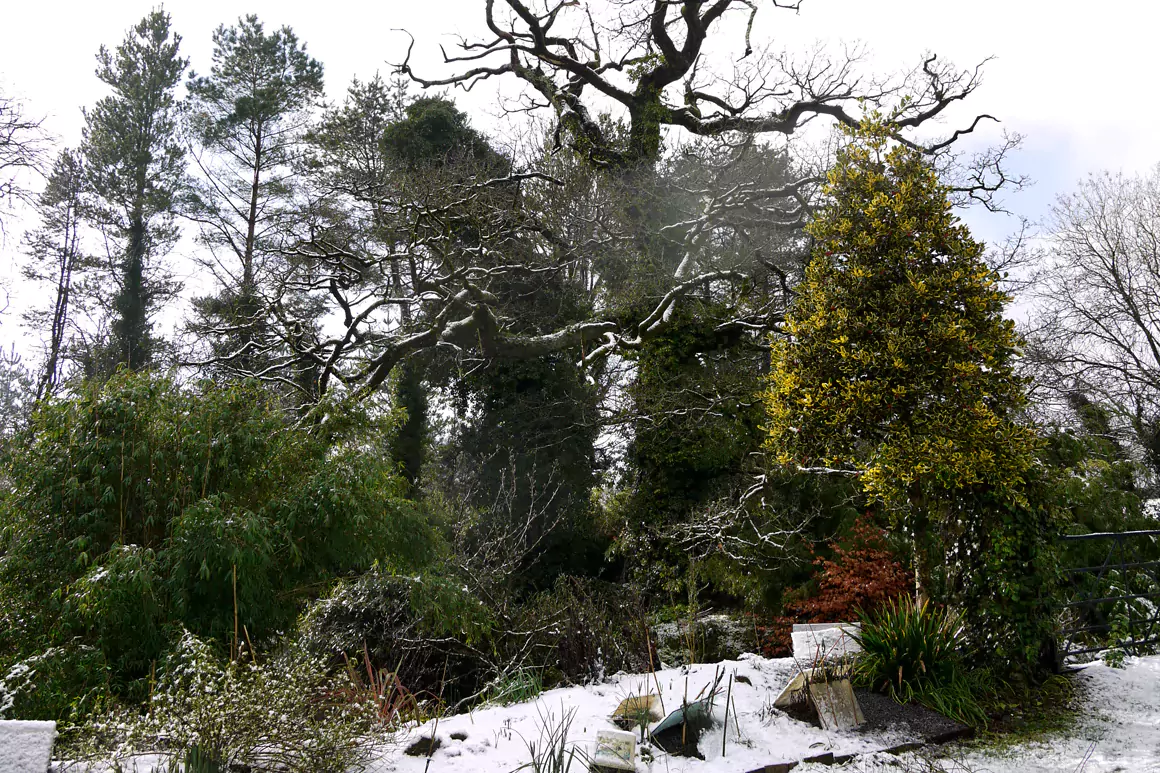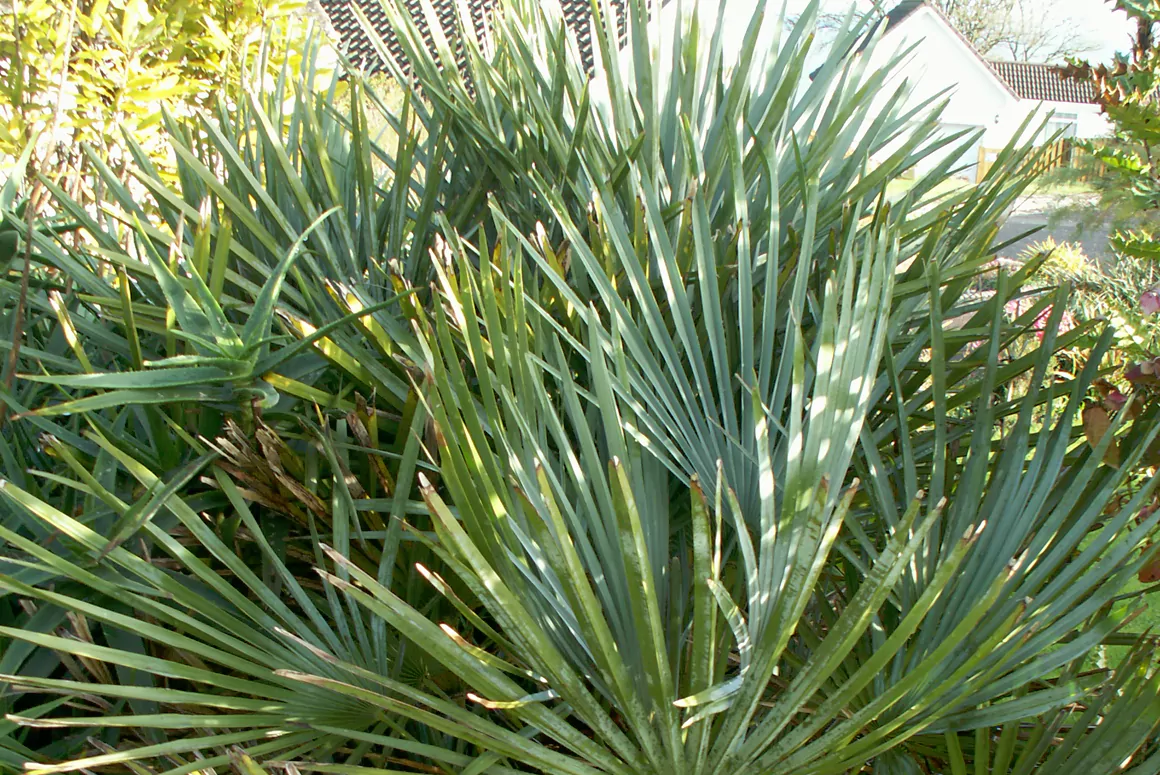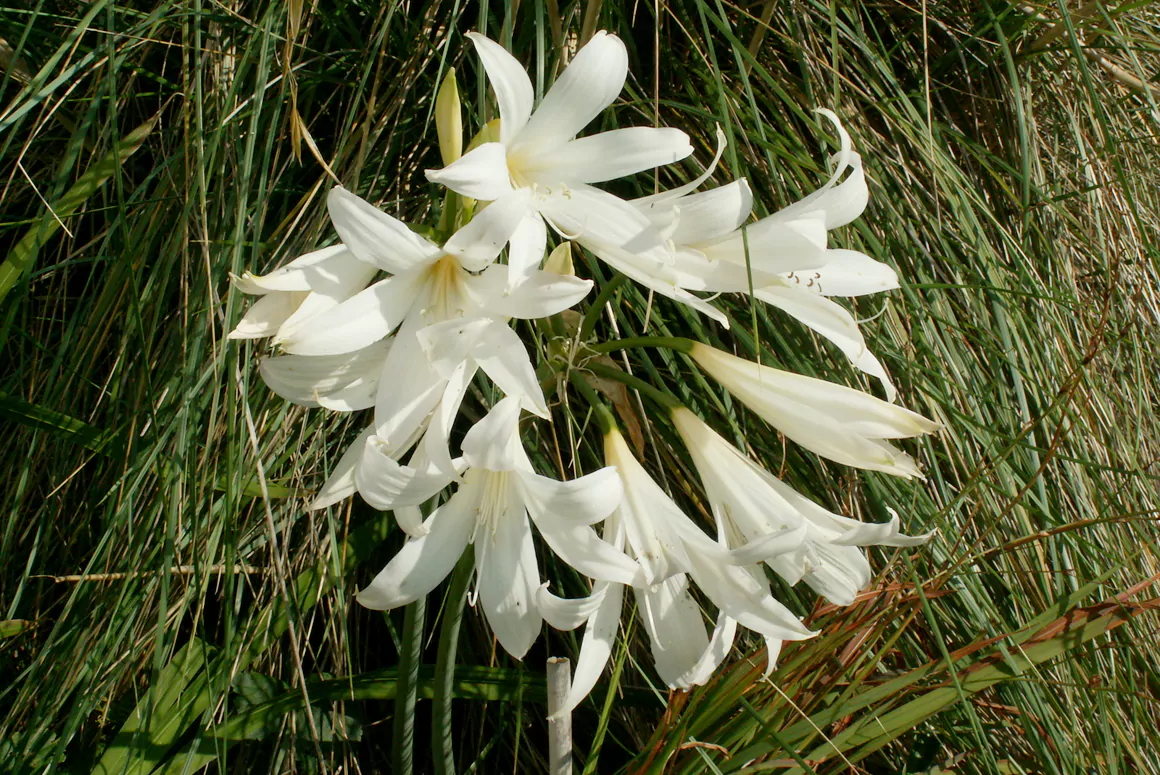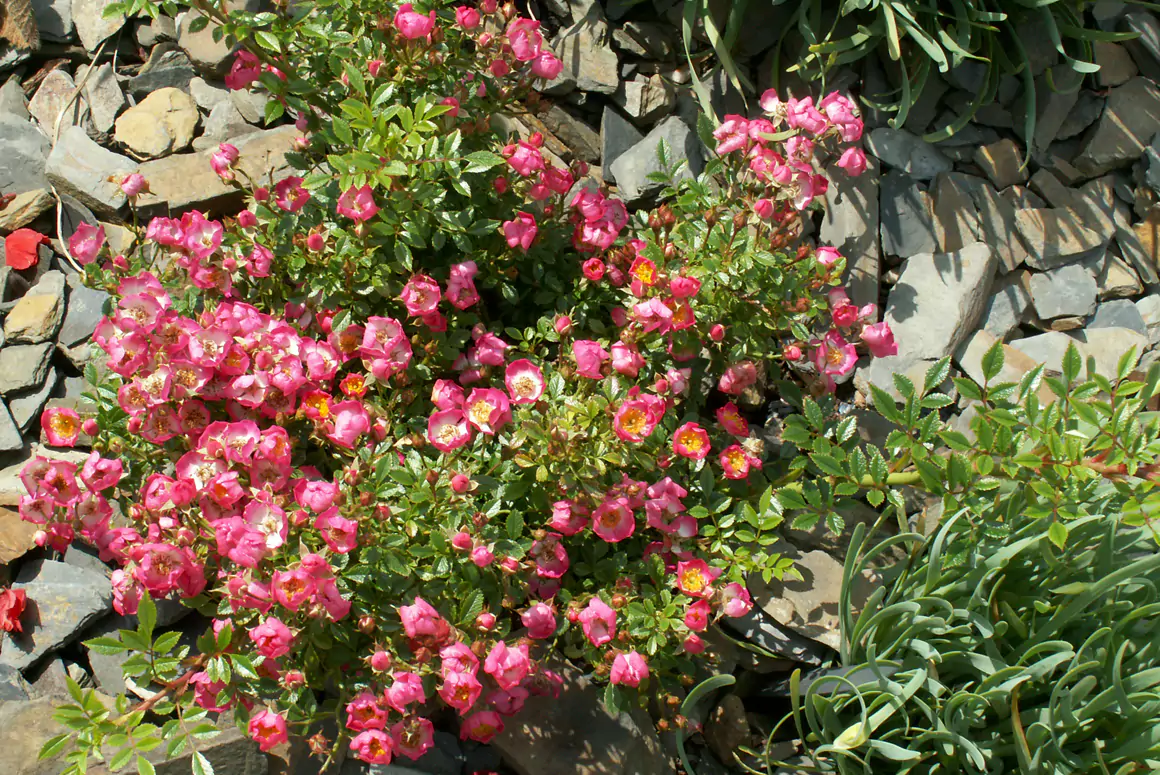![]()
When winter winds are piercing chill,
And through the hawthorn blows the gale,
With solemn feet I tread the hill,
That overbrows the lonely vale.O’er the bare upland, and away
Through the long reach of desert woods,
The embracing sunbeams chastely play,
And gladden these deep solitudes.Henry Wadsworth Longfellow (1807-1882)
Although the days are now becoming imperceptively longer and latent signs of spring apparent in emerging bulbs, the coldest time of year is imminent.
Any colour at this time of year is invaluable, and few plants are brighter or more dependable than the camellia. A rather delicate species for general garden use, Camellia sasanqua has the virtue of a delicate scent. However, after being crossed with the ironclad Camellia japonica, the resulting hybrids, called Camellia x vernalis, are completely hardy. I grow C. x vernalis ‘Yuletide’ which commences flowering in early November, and as implied continues past Christmas. The smallish deep red flowers, which are slightly scented are very effective viewed against the glossy dark green leaves.
Another extremely effective cross of C. saluenensis with C. japonica was performed by J. C. Williams at Caerhays in Cornwall resulting in the world famous hybrid Camellia x williamsii. As well as being very hardy, they have the attribute of shedding spent flowers on the ground, giving a secondary display. The most well known is probably ‘Donation’, a lovely semi-double pink, flowering from February and which is universally grown. I tend to prefer single flowers, and my own favourite is C x williamsii ‘Saint Ewe’, a glowing pink single with a boss of golden stamens. It flowers for me reliably from late November until March and is always a spectacle at Christmas.
- C. x vernalis ‘Yuletide’
- C x williamsii ‘Saint Ewe’
- Camellia japonica ‘Alba Simplex’
My last choice is Camellia japonica ‘Alba Simplex’, which is a selection of the species with simple single white flowers, as its Latin name implies. Sited in a deep shaded spot in my woodland border, its conspicuous golden bossed white bowls lighten the area from December to March. Its only slight flaws are its frequent production of large seed pods, and its tendency to retain spent flowers.
All the above are readily available online, and sometimes at garden centres. They thrive in any soil that is not chalky or alkaline and which has that magical quality of being well drained and moisture retentive. All perform best in an aspect not exposed to early morning sun, which will turn flowers brown. All three are in full flower at the time of writing [early December] and full of promise for the new year.
At the start of the year National Garden Scheme gardens offer a chance to view early colour which may be lacking in our own.
Llwyngarreg
There are not many gardens that can repay a visit at any time of year but Llwyngarreg near Whitland in Pembrokeshire is definitely one of them and deserves its inclusion as one of ‘The Great Gardens of Wales’ in the book by Tony Russell. Whilst it contains many rarities it also contains features which will amuse and interest visitors. There is an emphasis on scent early in the year with Daphne bholua ’Jacqueline Postill’ providing a delightful heady fragrance for many weeks and the spicy scented Hamamelis ‘Arnold Promise’ complementing it. The amazing chocolatey scent of Azara microphylla, which is a small delicate tree, fills the air in late February. There are beds of alpines, displays of Cornus ‘Midwinter Fire’, early flowering Rhododendron and masses of self-seeding Helleborus orientalis flowering everywhere. Don’t forget to keep your eyes open for the ‘candy stripe bamboo’ Himalayacalamus falconeri ’Damarapa’ whose spectacularly coloured stems have no equal. This garden is always worth a visit.
This garden opens for by arrangement visits from February to November. Search our Long Term Open Gardens for more information.

Bryngwyn Manor
Bryngwyn Manor in Gwent has been created to provide enjoyment and interest at this time of year, it extends to 3 acres and is wildlife friendly. There are winter snowdrops, a daffodil walk with mature trees, a walled parterre garden, ponds and shrubbery. This is a relaxed garden to be enjoyed by all the family with places to sit and take in the views, and areas for children to play and explore. Hot drinks and cake are available by the fire in winter!
Are you interested in learning how to forage in the spring and sampling the tasty produce? Why not join a Garden and Meadow Foraging Event at Bryngwyn Manor in April, run in conjunction with Wild Food UK.
Slade
Rosamund and Peter Davies have over a number of years developed Slade in Glamorgan into a horticultural gem. Formal areas around the house, blend into large swathes of grass that flow down a secluded valley sheltered by mature woodland. The grassy areas are enlivened by snowdrops, fritillaries, hellebores and bright blocks of crocus. Situated close to the sea, a visit to beautiful Southerndown Beach is a must do! Always interesting.
Banish the dark days of winter with a wonderful visit to our Snowdrop and Spring gardens and help change lives. The National Garden Scheme has just announced that in 2023 we donated £3,403,960 to some of the UK’s best-loved nursing and health charities. Thank You!
NGS Open Gardens
Welsh Country has two NGS open garden sections. The first ‘Open Gardens’ are gardens that are open on specific days and the ‘Long Term Open Gardens’ which are by appointment only. There is a search facility on each page so simply search for a garden name or an area of Wales (i.e. Swansea) you’d like to visit.






















